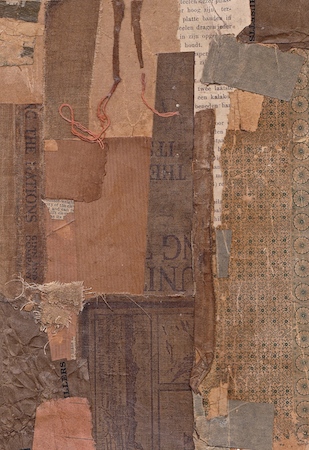 In the arctic, there is very little predation. The cold and lack of scavengers or insects keeps death on pause. The puffin with wet wings will lay on the beach for months. A washed up narwhal must wait for a polar bear. If he dies north of the tundra, a polar bear must wait for the slow erosion of wind and time.
In the arctic, there is very little predation. The cold and lack of scavengers or insects keeps death on pause. The puffin with wet wings will lay on the beach for months. A washed up narwhal must wait for a polar bear. If he dies north of the tundra, a polar bear must wait for the slow erosion of wind and time.
*
When they found my friend’s body thirty-six days after he went missing, they identified him by his teeth. He was not bleached bones in a field, but neither was he the man who went missing one April night. The medical examiner built the story backwards from skull fractures and broken ribs, to the miles of highway between death and vanishing, to the security camera at the ATM, to saying goodnight to his friends before he walked home. Though of course the police had already found the bloody knife wrapped in receipts, his stolen wallet in a motel in Miami, his picture in a stranger’s pocket. They didn’t need the autopsy to tell the whole story, only that last chapter.
*
My mother died whole, her last hours accounted for—weakness, blood drawn, seizure. The nurses closed her eyes but forgot her mouth. Before they wheeled her away, my sister pulled the rings from her swollen knuckles. Her hands were already stiffening. We hired someone to cut her open and explain what happened. Their story had only guesses and the weight and dimensions of her organs. Then we hired someone else to glue her eyes closed, secure her jaw with a wire, sew her mouth shut as naturally as possible. Then, moisturize her eyelids and lips. They massaged her body to break the rigor mortis. Then, a cut in her femoral artery, an IV, a pump, a drain for the blood the embalming fluid pushes through. Suture. Aspirate. Put her in the outfit she wore to my wedding. Friends volunteered to paint her nails and fix her hair. We learned you can’t dye a dead person’s hair. It’s also hard to curl it. The soft gel lights in the viewing room betrayed the stiff gray spokes of her roots.
*
It was my friend’s students who reported him missing. It was days before the search began. He was dead before anyone thought to look for him. I’m sorry my imagination wonders, but it does—what happens to a body in a Florida field for thirty-six days? How many people drove by and saw dark birds haloing the sky above him and thought, Armadillo, or maybe a deer.
*
To preserve the dead, ancient Egyptians invented embalming. Bodies were washed with palm wine and water from the Nile. They made an incision on the left side of the body to pull out the organs. These are always the first to decompose. In canopic jars they preserved the liver, lungs, stomach, and intestines. The body was stuffed with natron, linens, and sawdust, and then rubbed with oil. The unnecessary brain was pulled through the nose with a hook. Because it is the seat of intelligence and feeling and would therefore be needed in the afterlife, the heart was left inside.
*
On a hike my friend tells me that lightning struck a bison in that field a few years ago. By the time she got out to see it, vultures were already feasting. The eyes and the ass, she says. And when I look over confused, she says, That’s how they get in. That’s where the body is most tender. That’s where nature hollows the dead clean.
*
My mother’s will was neat. In order. All her belongings divided. Each loved one thought of. Each dollar assigned to a name. Witnessed. Notarized. She’d told us for years where to find it, hinted at the hymn and flowers she wanted at her funeral. My husband and I say we have to make a plan, see a lawyer, get documents drawn up. When it was just the two of us, it didn’t matter. We didn’t have much to leave to anyone, but now we have a son to think of. I used to imagine countries my husband and I would visit. Now I imagine the tomb I would build if we lived somewhere a body could last.
__
Traci Brimhall is the author of Our Lady of the Ruins, selected by Carolyn Forché for the 2011 Barnard Women Poets Prize, and Rookery, winner of the 2009 Crab Orchard Series in Poetry First Book Award. Her poems have appeared in The New Yorker, Poetry, Slate, The Believer, Kenyon Review, The New Republic, Ploughshares, and Best American Poetry 2013 & 2014. She’s received fellowships from the Wisconsin Institute for Creative Writing and the National Endowment for the Arts. She’s an Assistant Professor of Creative Writing at Kansas State University.

7 comments
Matthew Lippman says:
Sep 11, 2015
The heart is big in this beautiful piece/rumination on death. Fantastic.
Kenny A. Chaffin says:
Sep 21, 2015
Well done!
Leslie Brown says:
Oct 3, 2015
Beautiful and haunting. Thanks for sharing your words.
Ama says:
Oct 17, 2015
Wonderfully done.
mary purdy says:
Dec 13, 2015
Oh, Death! You bring us so much rich material on which to write! Thanks for this haunting piece.
AC says:
Feb 24, 2016
Love the entwining of two separate stories here. Beautifully written.
Amy Victoria says:
Apr 18, 2016
Necessary and disturbing. What beautiful, spare language – what carefully selected moments.